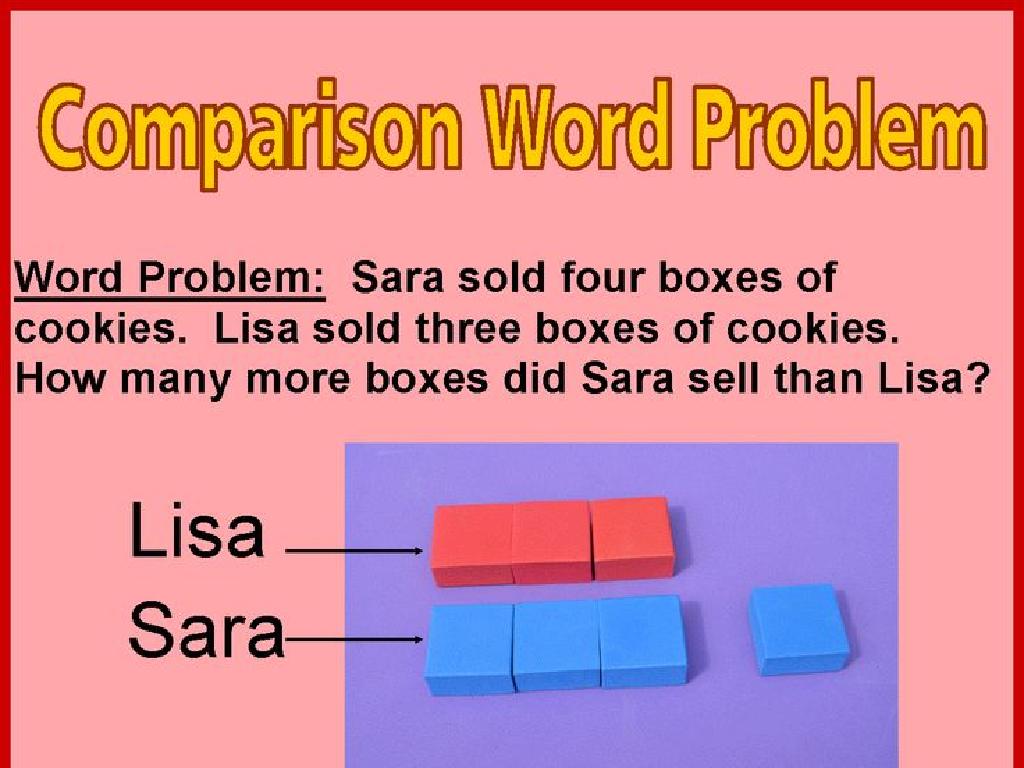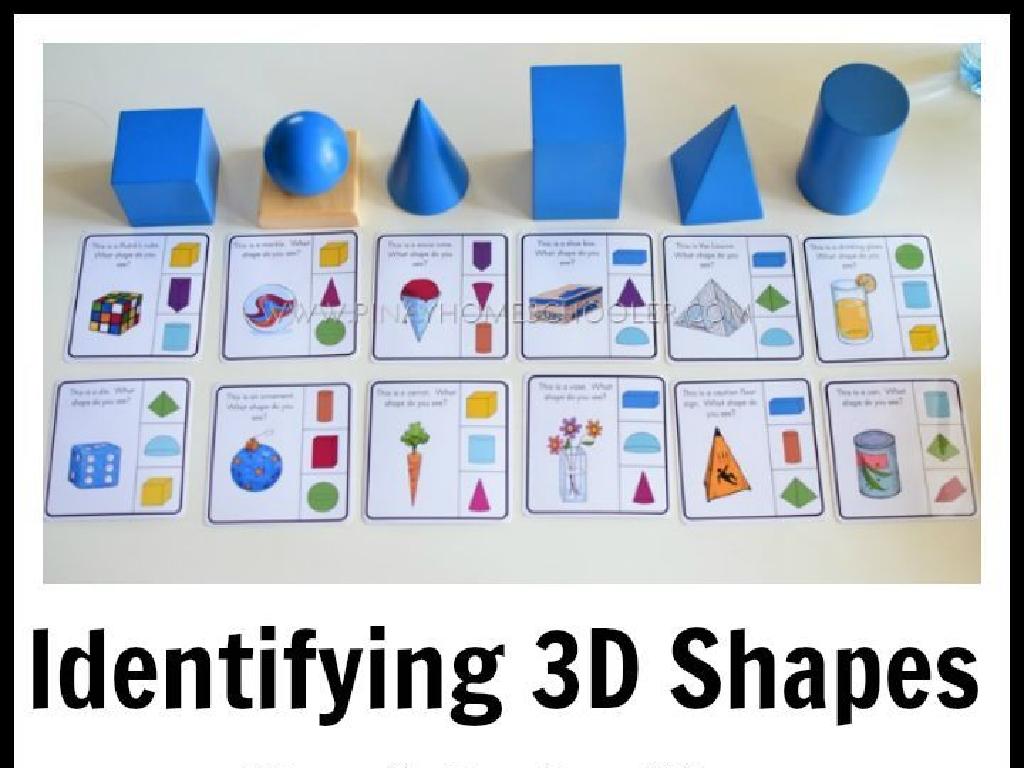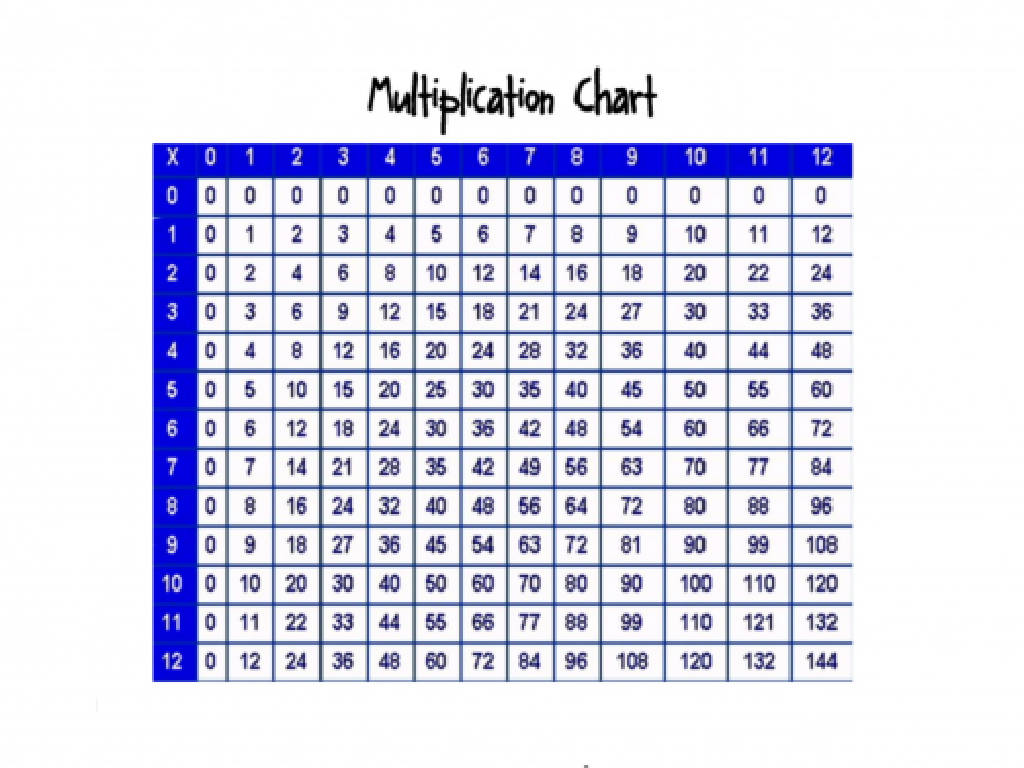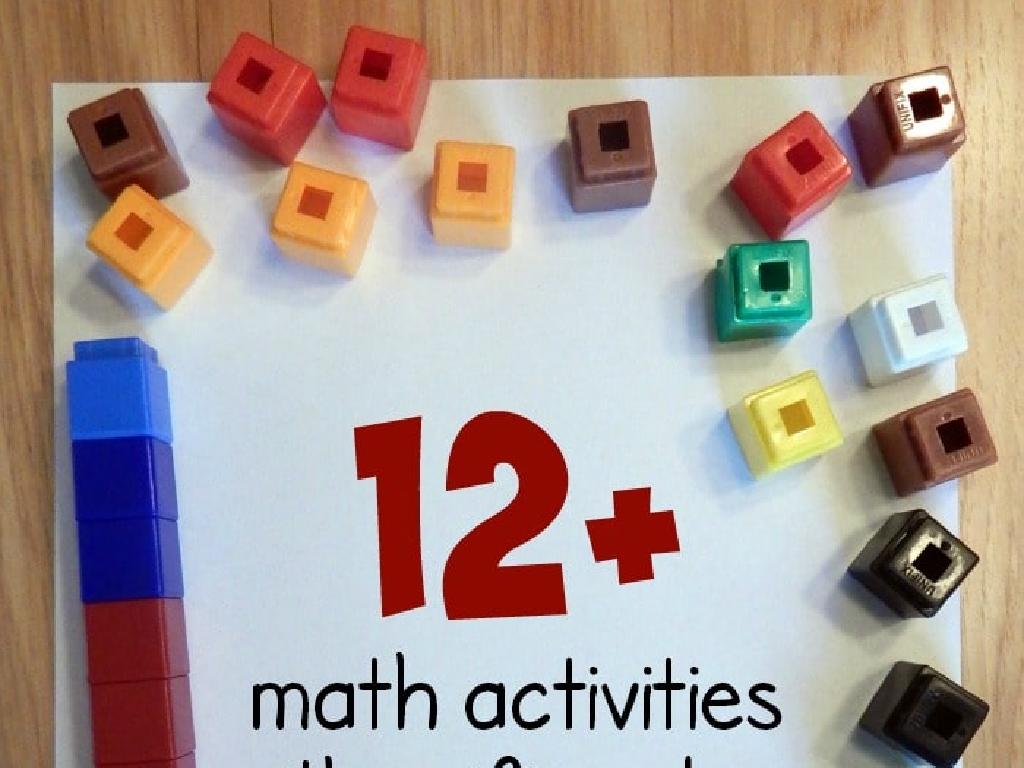Addition And Subtraction Sentences To 10: Which Is True?
Subject: Math
Grade: First grade
Topic: True Or False Equations
Please LOG IN to download the presentation. Access is available to registered users only.
View More Content
True or False Equations with Addition and Subtraction
– Learn addition and subtraction
– What are True or False Equations?
– Equations can be right (true) or not right (false)
– Using numbers up to 10
– We’ll add and subtract numbers within 10 to see if equations are true
– Practice with examples
– Example: Is 5 + 3 = 8 true or false?
|
This slide introduces first graders to the concept of true or false equations within the context of addition and subtraction up to 10. Begin by explaining the basic operations of addition and subtraction. Then, introduce the concept of true or false equations, emphasizing that an equation is a math sentence that can be either correct (true) or incorrect (false). Use simple examples with numbers up to 10 to illustrate true equations (e.g., 4 + 1 = 5) and false equations (e.g., 6 – 2 = 5). Encourage students to use objects like counters or fingers to physically represent the equations and verify their truthfulness. Plan interactive activities where students can create their own equations and determine if they are true or false, fostering a hands-on understanding of the concept.
Understanding Equations
– Equations are math sentences
– Just like we read words, we can ‘read’ numbers!
– They describe number relationships
– Numbers can be friends that ‘equal’ each other
– Equations can be true or false
– We play detective to see if the equation makes sense
– Practice with addition and subtraction
– Let’s try some examples using numbers 1 to 10
|
This slide introduces the concept of equations to first graders by comparing them to sentences that tell a story about numbers. Emphasize that equations are statements that can either be true or false, just like a fact or a made-up story. Use simple language and relatable examples to explain that we can check if an equation is correct by adding or subtracting the numbers. Encourage the students to think of equations as puzzles that they need to solve to see if they ‘make sense’ or not. Provide hands-on activities with addition and subtraction problems within 10 to help them practice determining the truthfulness of an equation.
True Addition Sentences to 10
– Addition combines numbers
– Example: 2 + 3 = 5
– Adding 2 and 3 makes 5, which is true
– Practice addition sentences
– Let’s solve some problems as a class
– Determine if sentences are true
– We’ll decide if the answers are correct or not
|
This slide introduces first graders to the concept of addition as combining numbers to make a new total. Start by explaining that addition is like putting things together to see how many you have in all. Use simple examples, such as combining 2 apples with 3 apples to end up with 5 apples. Engage the class with a few addition sentences, using numbers up to 10, and solve them together. Emphasize the importance of checking their work to see if their answers are true. For the activity, have students come up to the board to write their own addition sentences and solve them, or work in pairs to create and solve sentences, then discuss as a class whether the sentences are true or false.
Understanding Subtraction Sentences
– Subtraction means taking away
– Example: 5 – 2 equals 3
– If you have 5 apples and eat 2, you have 3 left
– Practice subtraction sentences
– Let’s solve problems like 4 – 1 or 6 – 5 together
– Find true or false equations
– Decide if statements like 3 – 1 = 2 are true or false
|
This slide introduces the concept of subtraction as taking away and provides a simple example for the students to understand. Encourage the students to visualize the subtraction process by using objects like apples or toys. After explaining the concept, engage the students with hands-on practice by solving subtraction sentences together. This will help them grasp the idea of finding the difference between numbers. Lastly, introduce true or false equations to develop critical thinking as they determine the accuracy of each subtraction sentence. The activity should be interactive, allowing students to use physical objects or drawings to visualize the subtraction process.
True or False Equations
– True equations balance
– Like a seesaw, both sides should be equal
– False equations don’t balance
– One side is heavier or lighter
– Spotting the difference
– Look for equal or unequal sides
– Practice with examples
|
This slide introduces the concept of true and false equations to first graders. Begin by explaining that a true equation is like a balanced seesaw, with equal amounts on both sides. For example, 4 + 3 = 7 is true because both sides equal 7. A false equation is unbalanced, like 5 + 2 = 8, which is not equal. Encourage students to visualize the numbers on a seesaw to determine if they balance. Use simple addition and subtraction examples within 10 to illustrate the concept. During class, practice with the students by presenting several equations and asking them to identify as true or false. This will help them understand the concept of equality and develop their critical thinking skills.
Let’s Practice Together: True or False Equations
– Is 4 + 3 equal to 7?
– Yes, 4 plus 3 is 7
– Does 6 – 2 equal 5?
– No, 6 take away 2 is 4
– Use objects to find answers
– Count blocks or toys for help
– Check answers with fingers
– Count on your fingers to add or subtract
|
This slide is an interactive class activity designed to help first graders understand the concept of true or false equations within the number range of 1 to 10. Start by presenting the equations on the board and ask the class to determine if they are true or false. Encourage the students to use physical objects like blocks or their fingers to visually represent the equations and verify their answers. This tactile approach helps solidify their understanding of addition and subtraction. Have the students share their methods and answers with the class to foster a collaborative learning environment. Possible activities include pairing students to solve equations together, using flashcards for quick practice, or creating a game where they correct false equations.
Your Turn: True or False Equations
– I’ll show you some equations
– Decide if they’re true or false
– Use counters to find the answer
– Counters can be small objects like beans or coins to help you count
– Share your answers with the class
|
This slide is an interactive class activity designed to engage first-grade students in understanding the concept of true or false equations within the number range of 1 to 10. Present a series of simple addition and subtraction equations and ask the students to determine if each equation is true or false. Encourage them to use physical counters like beans, coins, or blocks to visually represent the numbers in the equations, which will help them in solving the problems. After they have used their counters to solve the equations, ask them to share their answers and explain how they reached their conclusions. This activity will help reinforce their understanding of basic arithmetic operations and the concept of equality. Possible equations for the activity could include 5+3=8 (true), 2+6=9 (false), 7-4=3 (true), and 10-7=4 (false).
Class Activity: True or False Game
– We’re playing a card game today!
– Each card shows an equation
– Pick ‘True’ or ‘False’ to answer
– Stand on the side you believe is correct
|
This interactive game is designed to help first graders understand the concept of true or false equations within addition and subtraction to 10. Prepare a deck of cards with simple equations on them, ensuring that some are true and some are false. Divide the room into two sides, one labeled ‘True’ and the other ‘False’. When a card is shown, students must decide if the equation is correct or not and move to the corresponding side of the room. This activity promotes movement, decision-making, and peer discussion. Possible variations include having students hold up ‘True’ or ‘False’ signs, working in teams to decide on their answer, or explaining their reasoning for their choice. The goal is to reinforce their understanding of basic addition and subtraction facts in a fun, engaging way.
Celebrating Our Math Heroes!
– Congratulations on mastering true and false equations!
– Math is exciting and you’re doing great!
– Practice is key – keep it up at home!
– Try more equations with toys or snacks to make it fun!
– You’re all Math Superstars!
|
This slide is meant to wrap up the lesson on true and false equations, providing positive reinforcement and encouragement. Emphasize the progress the students have made and remind them that learning math can be an enjoyable experience. Encourage them to continue practicing at home, possibly with interactive methods like using toys or snacks for counting. This will help solidify their understanding and make them more confident in their math skills. Celebrate their achievements and let them know they are all ‘Math Superstars’ for their hard work and effort during the lesson.






